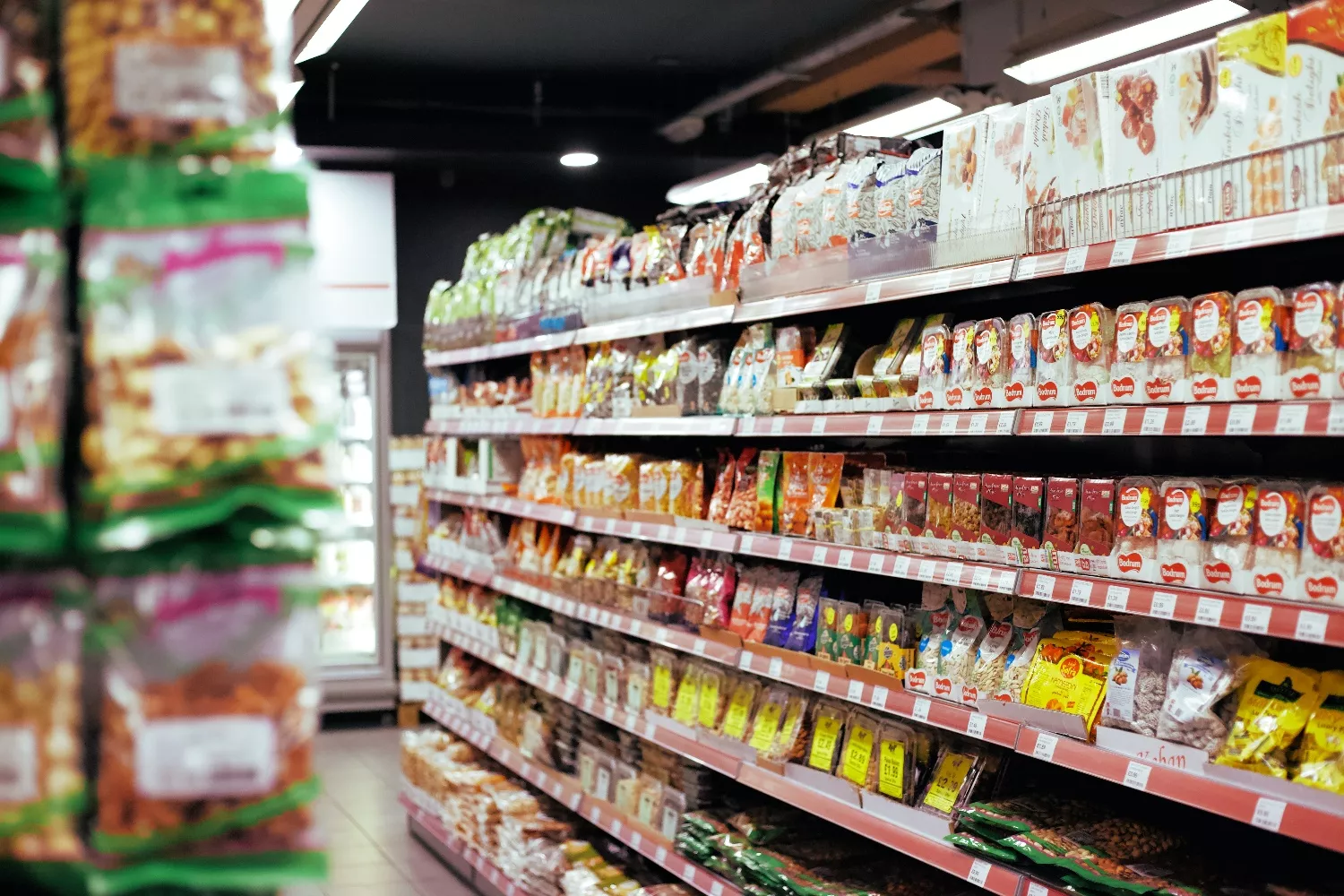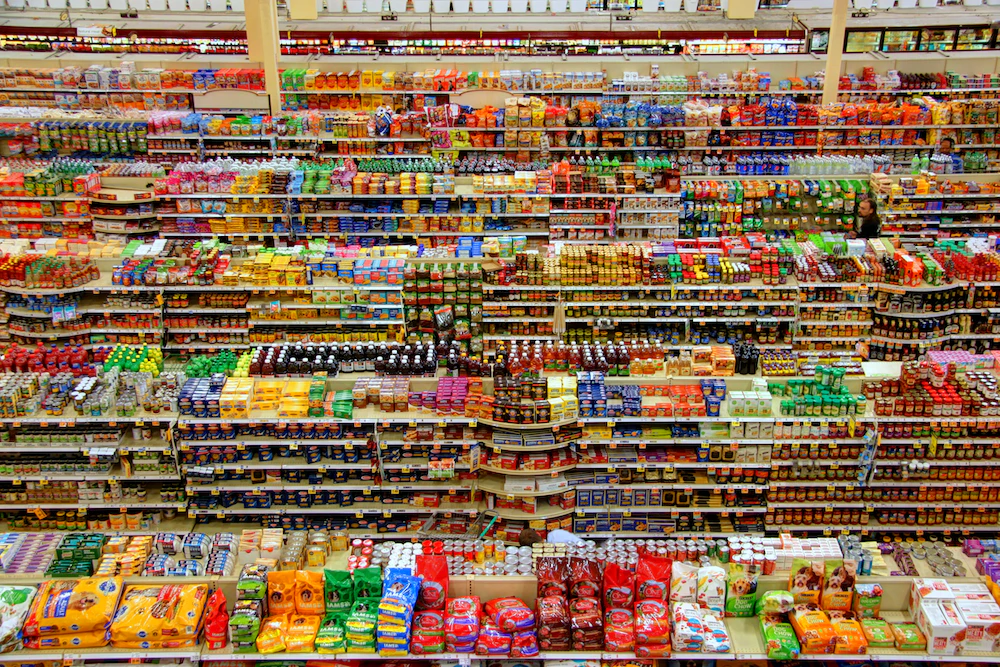
Article
Why FMCG companies are losing to smaller rivals
Research from Richard N. Foster has shown that the average lifespan of companies listed on the S&Ps 500 – the 500 most valuable companies traded on the U.S. stock market – was 61 years back in 1958. Today, the average lies more around 18 years. At this pace, 75% of the companies quoted today on the S&P 500 are set to disappear by 2027.
Too big to fail?
For FMCG companies, growth is no longer a given. Quick wins have become rarer, markets are becoming saturated, and the world has changed and evolved rapidly thanks to technology. A lot of smaller players have spotted opportunities and started grabbing market share from the big corporations.
This triggers the question: How is it possible that small companies, with a fraction of the marketing budget of big FMCG companies, are winning more and more market share and hurting the big guys?
At the House of Marketing, we have identified 4 main challenges FMCG companies are facing today:

1. Lack of consumer data
Most FMCG companies are still using a traditional marketing set up. Big budgets are spent on high reach campaigns through fixed media channels behind one creative idea. Often, the lion’s share of the marketing budget is still allocated to TV, where you do not capture (a lot of) consumer data.
Today’s playing field of digital tools, channels and data makes it possible to drastically cut budgets, reduce waste and therefore increase marketing efficiency. Companies can experiment with creative ideas and channels to define winning go-to-market strategies with micro audiences before scaling media investments.
This experimentation mindset is easily adopted by small players since their structures are flat and they have less processes and approval flows. They are more agile and invest the small marketing budget they have mostly in digital channels in order to capture consumer data and have a good understanding of who buys them and what campaigns actually work.
FMCG companies have started experimenting with e-commerce. What is the best choice for them: offering products on 3rd party e-retailers or pure players, on marketplaces or deal websites or offering the products through their own D2C brand platforms?
The answer to this question is simple: what is your objective? Depending on the objective sought, and in line with the brand proposition, different e-commerce paths can be explored. Data capturing is possible through e-commerce, but strongly depends on which channels you are going to play in and the partnerships you can build with the 3rd parties.
2. The agency issue
Most FMCG companies work together with agencies to handle their social ads and social media platforms, since they are too busy coordinating the product launches, activations and in-market analysis of performance. Moreover, they often do not have the necessary knowledge to do this themselves.
This knowledge gap between the agency and the in-house marketers inevitably leads to a loss of insights. A vast amount of valuable consumer data can be found on social media, in the data analytics of the campaigns (and website). Furthermore, how can you challenge your agency if you do not know where to look, what to look out for and how the tools work?
Most agencies share some slides with key figures after the campaigns, but they seldom share findings during the campaigns in order to make adjustments to increase the marketing effectiveness and ROAS.
Small players often do their digital marketing themselves and hire people in-house. This gives them the advantage of being able to engage in active social listening, understand the customer better and hence offer products better tailored to their needs. Since they are more flexible, they can also easily test and learn what works and reinforce or unplug campaigns accordingly.
3. Slow go-to-market (G2M) process
Companies that outpace their rivals increase market share, boost their negotiation leverage towards trade, and position themselves as innovators. Agile companies have an experimental culture and use test markets or channels to integrate user feedback rapidly throughout the process to adjust value propositions, innovations, and marketing campaigns.
At most big corporations, innovations are prepared years in advance by global teams. They go through a string of heavy processes and need to pass a multitude of ‘gates’ before eventually seeing the light of day. Local markets can provide feedback and volume assumptions based on their ‘feeling and knowledge’ of the local market.
Marketers are not magicians, yet, and cannot predict the future. Even if products or marketing campaigns look good, you never actually know how consumers will react to them. Moreover, an idea that might have been good 3 years ago, may already be outdated today.
It is no surprise that 80%* of new product launches fail.
The chances of success increase with 2 magic ingredients: first, delving into the unconscious decision-making process of consumers to understand why they buy things thanks to neuromarketing research. Second, openness to customer feedback throughout the whole process, i.e. an in-market experimentation mindset. At the House of Marketing, we call this Integrated Data Marketing or ID Marketing.
4. Natural products linked to a genuinely sustainable purpose
Sustainability has been a hot topic in recent years and FMCG companies have been criticized for taking little or no action. Plastic waste is the 2nd biggest environmental concern of consumers, the ‘packaging’ issue in particular. Today, quality reassurance labels and labels about packaging are more frequently read than product labels containing calorie or sugar content information.
Sustainable products that have a clear benefit for the consumer and/or for the planet will become the norm in the coming years, and it is important your communication is in line with the overall marketing strategy to avoid any greenwashing or negative backlashes.
Most of the smaller companies out there are gaining importance due to their true understanding of consumer pains and willingness to buy more natural/sustainable products. Naturalness and sustainability are really embedded in the company culture and in the brand purposes.
Today, FMCGs are making some efforts and taking more responsibility for their environmental impact. Nevertheless, a lot of FMCG companies struggle to incorporate sustainability into their strategy and find the right balance between their ‘core’ products that have existed for years and their new ‘natural’ ranges. Finding the right mix, incorporating it into the purpose of the brands and becoming a credible player remains a challenge.
Some FMCG companies are already making some good progress to overcome these challenges but most of them are still falling at the hurdles and struggling to come up with the right answers. The world is evolving at a fast pace and the traditional way of doing marketing is just not good enough anymore.
Really understanding what consumers need is a challenge and companies need to dig deeper than just relying on quantitative and qualitative data to build their marketing strategies. Adopting an experimental mindset is a must to quickly test, learn and adapt and make sure your products are aligned with the customer values.
Any of these challenges sound familiar? Would you like to learn more about how to stay ahead of smaller players? Do not hesitate to contact us so we can discuss how we can best help you reach your goals. If you want to keep exploring the FMCG topic: my colleagues created a 3-step guide to build a solid, customer-centric go-to-market plan in FMCG, which I highly recommend.
Any of these challenges sound familiar? Would you like to learn more about how to stay ahead of smaller players? Do not hesitate to contact us so we can discuss how we can best help you reach your goals. If you want to keep exploring the FMCG topic: my colleagues created a 3-step guide to build a solid, customer-centric go-to-market plan in FMCG, which I highly recommend.